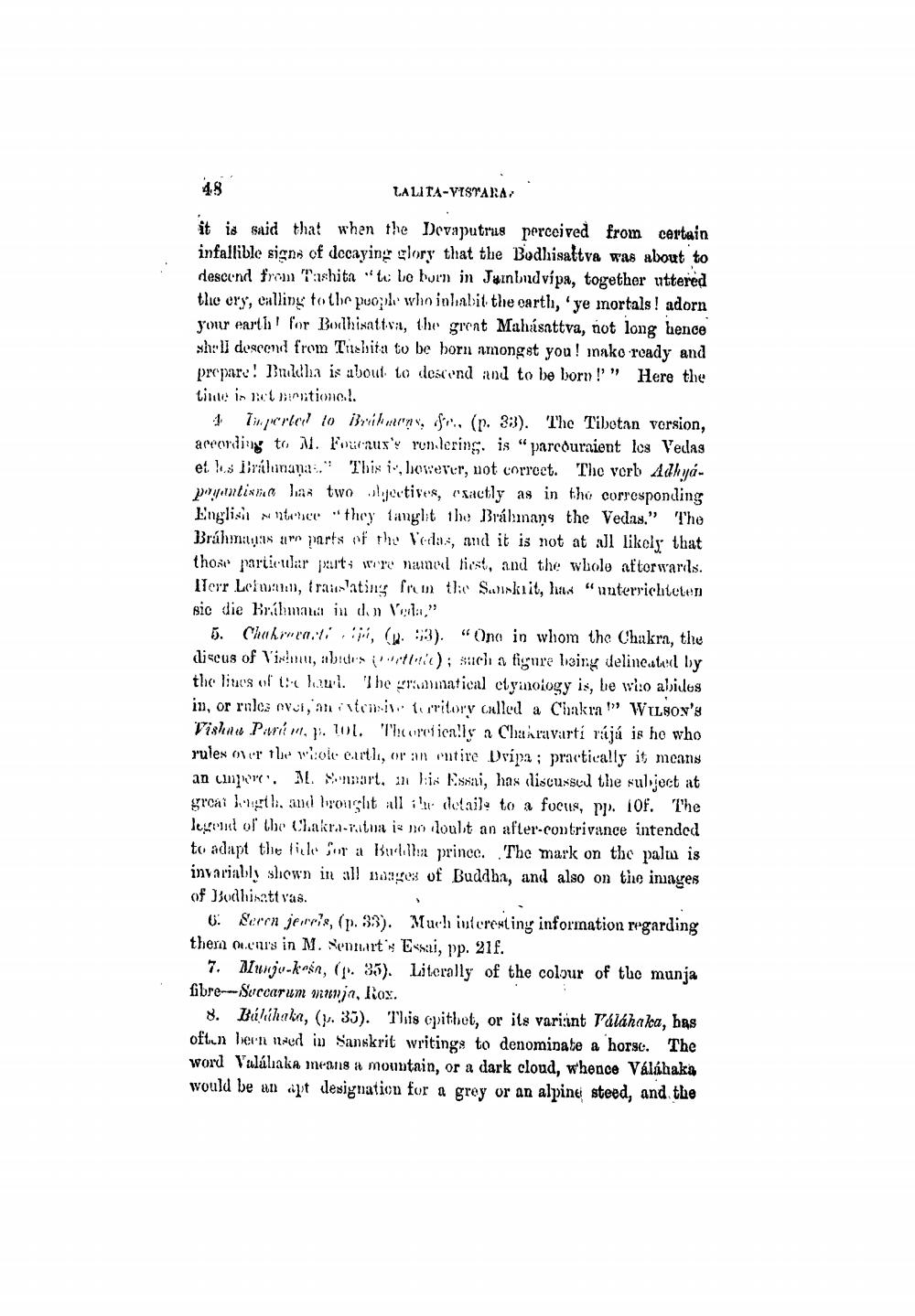________________
48
LALITA-YISTARA
it is said that when the Devaputras perceived from certain infallible signs of decaying glory that the Budhisattva was about to descond from T:shita "tu le born in Jainbndvípa, together uttered the ory, culling to the people who inhabit the earth, 'ye mortals! adorn your earth' for Bouthisattva, the great Mahasattva, not long hence she'll descend from Thebita to be born amongst you! nako ready and prepare! Buldha is about to descend und to be born!" Here the time in a minutimol.
Tinported to Bribns, fr.. (p. 33). The Tibotan version, according to M. Fouiaus renlering. is "parcouraient les Vedas et les Bralunaņa." This i-, bowerer, not correct. The verb Adhyapwantinna las two wyjectives, sactly as in the corresponding Englisintisce "they tanglit the Brálamans the Vedas." The Brahms are parts of the Vedas, and it is not at all likely that those partie war jurts mire namnet ties, and the whole aftorwarils. Herr Leiwt1:1), translating from the Swiskuit, has "unterrichteten sic die Brilmaa in den Vorlar."
5. Chakmenti ( 53). “Ono in whom the Chakra, the discus of Vixmu, abides c ); such a figure being delineater by the lives of the laul. 'l he gramatical et yinology is, be wio abides in, or enles evul, an inte furilory called a Chakra!" Wilson's Vishnu Pirám, . 101. Turciicalls a Chakravarti rájú is he who rules over the whole curth, or an entire Dripa ; practically it means an c em'. M. mart, in his Essai, has discussed the subject at grcai beti, and lvought all !!detail, to a focus, pp. 10f. The legend of the Chakra-ratna i no doubt an after-contrivance intended to adapt the file for a Bariluba prince. The mark on the palm is invariably shown in all ages of Buddha, and also on the inages of Bodhisattvas.
6. Serrn jewels, (p. 33). Much interesting information regarding thern .cou's in M. Nenarts Essai, pp. 21f.
7. Munjo-kon, (r. 35). Literally of the colour of the munja fibre---Succarum munja, Rox.
8. Búlihaka, (1. 35). This opithet, or its vari:int Váláhaka, has oftun bein need in Sanskrit writings to denominate a horse. The word Valálaka means a mountain, or a dark cloud, whence Válábaka would be an «pit designation for a grey or an alpine steed, and the




